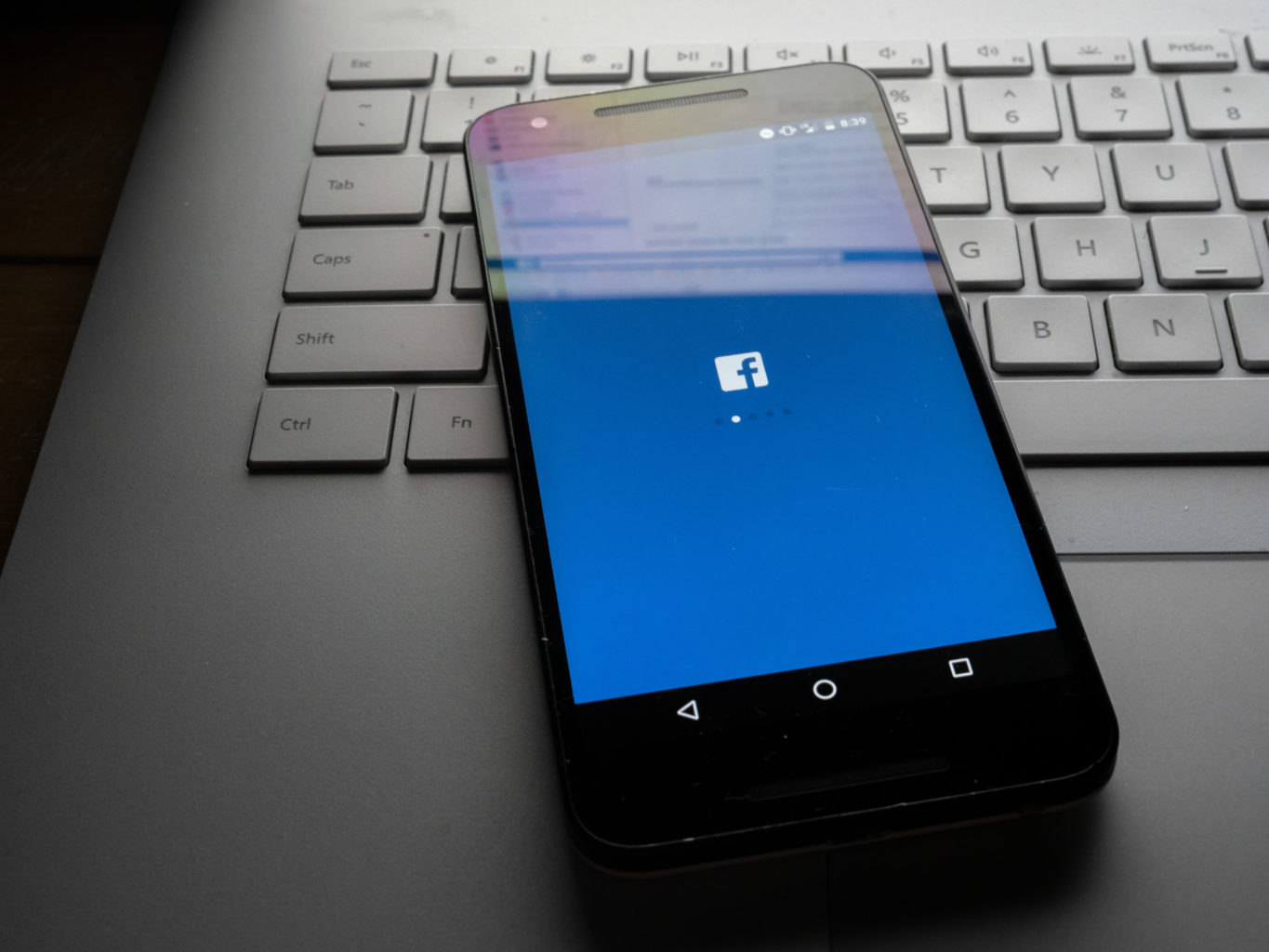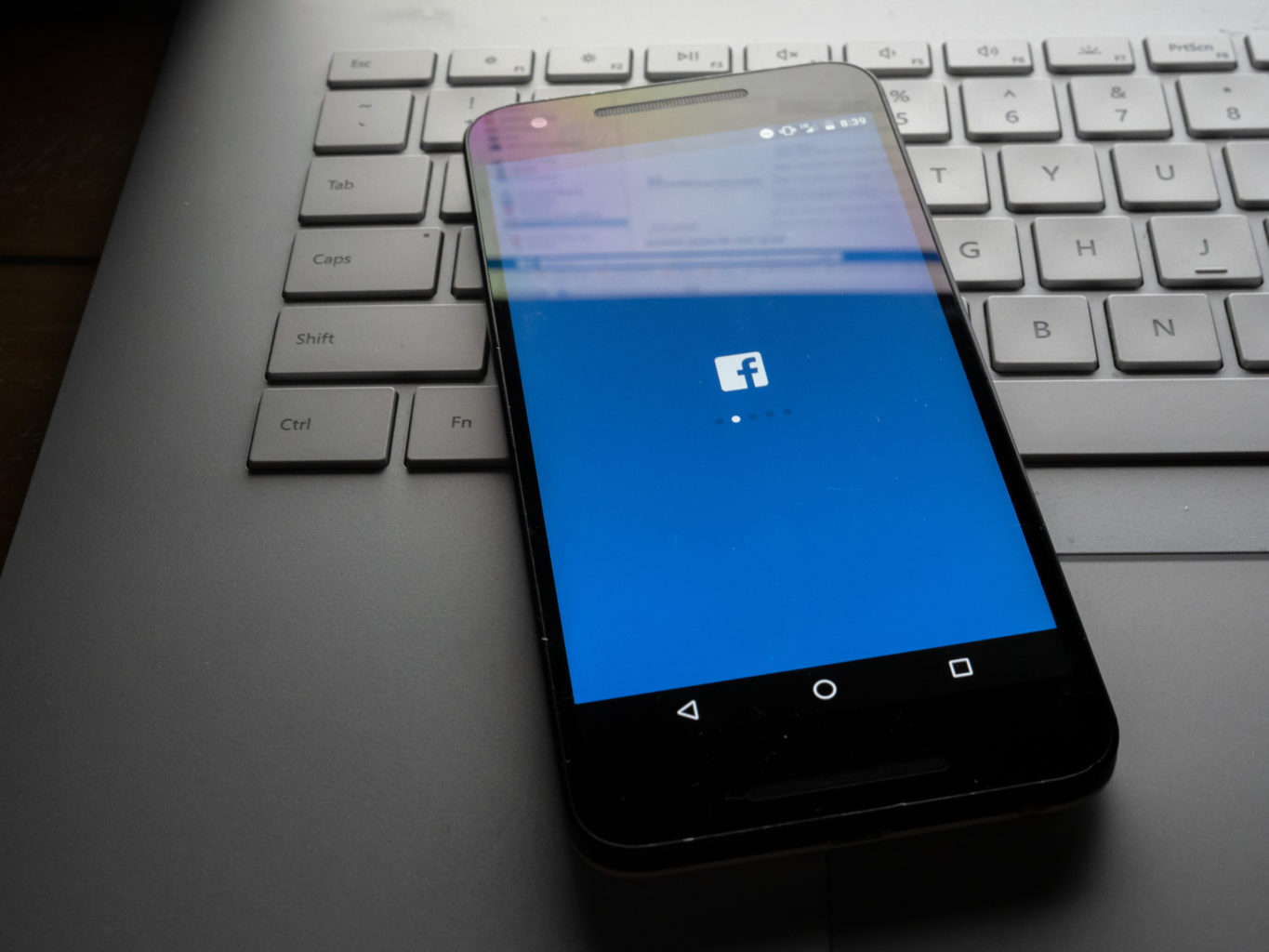Five months after Facebook founder Mark Zuckerberg appeared before Congress, the US government once again invited top tech executives from Facebook, Twitter, and Google to the fourth and final installment of the series of high profile hearings on social media’s role in US democratic proceedings.
Facebook COO Sheryl Sandberg and Twitter CEO Jack Dorsey faced the Senate Select Intelligence Committee, for the purpose to discuss the National Security issues and foreign interference through social media platforms in US elections.
Google was notably absent from the proceedings, after the firm failed to send a senior executive ‘at the right level’ to Washington. Google submitted a written testimony ahead of the hearing, which the Senate discarded. In place of a Google representative, the Senate committee left an empty chair.
Opening Remarks from the Senate Chairman Richard Burr and the Vice Chairman Mark Warner
Chairman of the Senate Richard Burr made his opening remarks welcoming Jack Dorsey CEO Twitter and Sheryl Sandberg COO Facebook. He started with some words from the recently passed John McCain. McCain's place at the hearing was marked with a single white rose on a black cloth. "He will be dearly missed," Chairman Burr says.
He opened his speech discussing about social media in the last 18 months. He acknowledged its immense potential for good but highlighted how the recent past has show how vulnerable social media can be to corruption and misuse. He said the committee takes this issue very seriously and appreciates the fact that Facebook and Twitter have taken responsibility with an equivalent and appropriate measures of seriousness and unlike their peer Google, have shown up for the hearing with the ‘appropriate level of corporate representation’.
He further added that the purpose of this hearing was to discuss the role social media plays into the execution of foreign influence operations. The Chairman precisely made a point that its important we be candid with our language because that is what the significance of this threat demands. He said,
“We need to be precise about the foreign actors we talking about. We need to be precise about the consequences of not acting and we need to be candid about being responsible for solving this problem and where it lies.”
Chairman Burr's said that "business as usual" for these tech firms is not good enough. "We've identified the problem, now we've got to find a solution," he added. He also adds a jibe at Google for failing to send the "right senior executive".
His sentiments were echoed by Vice Chairman Mark Warner, who took over from Burr. He was "deeply disappointed" in Google for not taking the issues being discussed yesterday seriously enough.
Vice Chairman Mark, also put forward some thoughts and open questions to Twitter and Facebook to improve their policies and systems:
Users should have the right to know when they are interacting with bots or humans on the platform
Isn't there a public interest in ensuring there is more anonymised data to help researchers and academics identify potential problems and misuse.
Why are your terms of service so difficult to find and nearly impossible to read and understand
Ideas like data portability, data immunization or first party consent should be adopted
After encountering numerous situations of misuse, what kind of accountability should be implemented to the flawed advertising model
Sheryls Sandberg’s defending comments
The Facebook CEO Sheryl Sandberg smoothly projected the impression that the company is always doing something. Whether that’s on combating hate speech, hoaxes and “inauthentic” content, or IDing and blocking state-level disinformation campaigns — thereby shifting attention off the deeper question of whether Facebook is doing enough.
Many of her answers courteously informed senators that Facebook would ‘follow up’ with answers and/or by providing some hazily non-specific ‘collaborative work’ at some undated future time — which is the most professional way to kick awkward questions.
Sheryl started her opening remarks by thanking the committee for giving her the opportunity to talk in the Senate Hearing. Referring to her written testimony which goes into more detail and here few points Sandberg reiterated in the session.
Russia used our platform to interfere in the US elections and Facebook was too slow to spot this and too slow to act and that is on us, she said
She mentioned about taking collaborative efforts with government and law enforcement committees. She further stated that at Facebook they are investing in long term security, and have doubled the number of people working in safety and security. They are able to view security reports in 50 languages 24 hours a day.
They use better ML and AI techniques to be more proactive in finding abuse.
Their first line of defense is finding and taking down the fake accounts and pages.
Blocking millions of attempts to make fake accounts. Making progress on fake news and limiting their distribution as well.
They demark articles by third party fact checkers and warn people who give them or about to share them. They show them related articles with more facts for a more well rounded opinion.
Strong steps taken to prevent abuse and increase transparency on their advertising platform. For political issue you can now see who paid for the ads, how much they paid and the demographics of the advertisers.
Advertisers are also required to go through a long authorization process to confirm their authentic identity.
Finally Sandberg concluded by saying these steps wont stop people who are trying to game the system but it will make it a lot harder. She emphasized on working more collaboratively with the government and law enforcement agencies. She continued that Facebook is more determined than its opponent and they are in a grey area working together to meet this challenge.
Jack dorsey’s defence
“We weren’t expecting any of this when we created Twitter over 12 years ago.
We acknowledge the real-world negative consequences of what happened, and we take full responsibility to fix it.”
Here's the opening to Jack Dorsey's prepared statement:
“Thank you for the opportunity to appear before the Committee today so I may speak to you and the American people.
Twitter’s purpose is to serve the public conversation. We are an American company that serves our global audience by focusing on the people who use our service, and we put them first in every step we take. Twitter is used as a global town square, where people from around the world come together in an open and free exchange of ideas. We must be a trusted and healthy place that supports free and open discussion.
Twitter has publicly committed to improving the collective health, openness, and civility of public conversation on our platform. Twitter’s health is measured by how we help encourage more healthy debate, conversations, and critical thinking. Conversely, abuse, malicious automation, and manipulation detracts from the health of our platform. We are committed to hold ourselves publicly accountable towards progress of our health initiative.
Today, I hope my testimony before the Committee will demonstrate the challenges that we are tackling as a global platform. Twitter is approaching these challenges with a simple question: How do we earn more trust from the people using our service? We know the way we earn more trust around is how we make decisions on our platform to be as transparent as possible. We want to communicate how our platform works in a clear and straightforward way.”
Jack mentions, “Abuse, harassment, troll armies, propaganda through bots and human coordination, misinformation campaigns, and divisive filter bubbles…that‘s not a healthy public square. Worse, a relatively small number of bad-faith actors were able to game Twitter to have an outsized impact.
We weren’t expecting any of this when we created Twitter over 12 years ago. We acknowledge the real-world negative consequences of what happened, and we take full responsibility to fix it.
We’ve seen positive results from our work. We‘re now removing over 200% more accounts for violating our policies. We’re identifying and challenging 8-10 million suspicious accounts every week. And we’re thwarting over a half million accounts from logging in to Twitter every day.
Today we‘re committing to the people, and this committee, to do that work, and do it openly. We‘re here to contribute to a healthy public square, not compete to have the only one.”
Few Questions to the witnesses from the Senators in the committee
Senator James E. Risch Questions on Hate Speech
“Who sets the security standards or the descriptions of authority of manipulative content and if there is any kind of unanimity amongst them or are there any debates or hate speeches in the team”
Sandberg said that language that leads to violence is not permitted on their platform and Twitter CEO Dorsey shares the same views.
Risch asked whether there was any way for Facebook to find any distinction between US citizens and people from other countries.
Sandberg responded saying Facebook asks people to declare where they are from. People are allowed to talk about any country, but are not allowed to talk about hate. They are not allowed to interfere or influence elections. Facebook is also looking to dive further into transparency reporting.
Twitter is focusing on behavioural patterns. It tracks common patterns of behaviour and utilizes that information to find out the unauthentic content. They have built deep learning and machine learning technologies to recognize these patterns quickly and shut them before they spread in other areas.
Senator Martin Heinrich on Threat to Elections
“What is it that you have learned from the past elections since 2016 as the platforms have been used throughout the course of a number of elections around the world. And how you have informed your current posture in terms of how you are gaining transparency in this activity?”
Sandberg said that Facebook is getting smarter at detecting and preventing threats to elections but warned that the opponents are getting smarter as well.
Dorsey followed by mentioning how Twitter is working with AI tools to recognise patterns of behaviour that allow people to artificially amplify information.
Senator Susan Collins on why Twitter doesn't intimate individuals
“Once you’ve taken down accounts that are linked to Russia, these imposter accounts, what do you do to notify the followers of those accounts that they have been following or engaged in accounts that originated in Russia and are not what they appear to be.”
“We simply haven’t done enough… we do believe transparency is a big part of where we need improvement... We need to meet people where they are... We are going to do our best to make sure that we catch everything via external partnership and other channels. We recognise we need to communicate more directly,” said Jack Dorsey.
He also added, “We are looking to incentivise people not only based on the number of followers they have but also the way they share content online. By what kind of content they share. We are also looking to expand our transparency report and extend the same to the public.”
How Can Facebook & Twitter Clean Their Systems?
“We have been investing heavily in identifying bad actors in the system. Most of our takedown have been on our own, but we have coordinated with external parties to make this successful.” said Sandberg.
Dorsey had his own response saying, “There are a number of short term risks involved but the only way we'll grow is by building the platform's health and we have strengthened our partnership with government agencies and law enforcement partners.”
The stock prices of Twitter and Facebook don’t seem to be holding up to the questioning and have been dropping since the hearing began.
Sandberg added, “the most important determinant is what people choose to follow. If you don’t want to follow someone we encourage that. We are going to do a contribution to investing in technology to figure out a solution to battle deep fake news.”
“I encourage both of you to work closely with academia… I hope that you will commit to providing data that goes beyond a 3 year window to researchers who are looking into Russian influence on your platforms”, concluded Senator Collins
Senator Harris on business incentive alignment and policy inconsistencies at Facebook
“What metric are you using to calculate the revenue generated associated with those [inorganic] ads? And what is the dollar amount that is associated with that revenue?...
What percentage of content on Facebook is inorganic?.. You must know.”
Sandberg answered, “Ads don’t run with inorganic content on our service. So there is no way to firmly ascertain how much ads are attached to how much organic content and that’s not how we work.”
Harris further asked “How can you reconcile an incentive to create and increase your user engagement when the content that generates a lot of engagement is often inflammatory in nature?”
Sandberg gave a specific example of Facebook’s hate speech moderation failure, a financially incentivized policy and moral failure. She referenced a ProPublica report from June 2017, which revealed the company had told moderators to delete hate speech targeting white men but not black children as they were a protected class. She continued that it was a bad policy and they had fixed it.
Harris questioned whether the policy was changed after the report? To which Sandberg uncomfortably responded about getting back to the committee on the specifics of when and what would have happened.
Senator Blunt on liability implications and learning from attempts at improving the platforms this year
“In the interest of transparency and public education…, are you willing to archive suspended accounts...?”
Dorsey opened by saying, “As we think about our singular priority of improving the health of public conversations, we are not going to be able to do long term work unless we’re look at the incentives that our product is asking people to do everyday.”
Dorsey agreed that archiving historical data is a great idea, but further understanding of the legal implications of such an action is needed.
“The business implications, the liability implications of what we’re asking you to do are pretty grey,... what’s the challenge here?” asked Blunt.
Tighter co-ordination helps, said Sandberg responded.
We’d like regular cadence of meetings with our law enforcement partners, we’d love to understand the secular trends that they are aware of in our peer companies our other mediums or more broadly that would inform us on how to act faster. We’d appreciate consolidating to a single point of contact instead of bouncing between multiple agencies to do our work,” added Dorsey.
Senator Lankford on Data of Suspended Accounts
Both Twitter and Facebook keep records of the suspended accounts for later analysis and also for referrals by law and enforcement bodies. Sandberg was also questioned on the number of fake accounts on Facebook.
Senator Manchin on Why Facebook & Twitter Don't Operate in China
Both Facebook and Twitter do not operate in China because the Chinese government hasn’t allowed both these platforms in the country. Sandberg and Dorsey unanimously replied to the senator.
US Senator Cotton on Why Wikileaks is Active on Facebook and Twitter
WikiLeaks and Julian Asange remain active on Facebook & Twitter. Sandberg said that these accounts don’t violate any of Facebook's terms. Dorsey also supported the viewpoint and clarified that Twitter is open to inviting law and enforcement to investigate if needed.
US Senate Vice Chairman Mark Warner Wraps It Up
Warner thanked both Dorsey and Sandberg for their presence and urged both to make their platforms safer for users across the US. He also thanked them for taking down bad actors online and in helping fight against fake news.
US Senate Chairman Richard Burr also thanked both the individuals for being present and addressing the senators’ questions.
To watch the full coverage of the hearing visit the US Senate Select Intelligence official page.
Google’s Senate testimony, “Combating disinformation campaigns requires efforts from across the industry.”
Twitter’s CEO, Jack Dorsey’s Senate Testimony: On Twitter algorithms, platform health, role in elections and more
Facebook, Twitter takes down hundreds of fake accounts with ties to Russia and Iran, suspected to influence the US midterm elections
Read more
 United States
United States
 Great Britain
Great Britain
 India
India
 Germany
Germany
 France
France
 Canada
Canada
 Russia
Russia
 Spain
Spain
 Brazil
Brazil
 Australia
Australia
 South Africa
South Africa
 Thailand
Thailand
 Ukraine
Ukraine
 Switzerland
Switzerland
 Slovakia
Slovakia
 Luxembourg
Luxembourg
 Hungary
Hungary
 Romania
Romania
 Denmark
Denmark
 Ireland
Ireland
 Estonia
Estonia
 Belgium
Belgium
 Italy
Italy
 Finland
Finland
 Cyprus
Cyprus
 Lithuania
Lithuania
 Latvia
Latvia
 Malta
Malta
 Netherlands
Netherlands
 Portugal
Portugal
 Slovenia
Slovenia
 Sweden
Sweden
 Argentina
Argentina
 Colombia
Colombia
 Ecuador
Ecuador
 Indonesia
Indonesia
 Mexico
Mexico
 New Zealand
New Zealand
 Norway
Norway
 South Korea
South Korea
 Taiwan
Taiwan
 Turkey
Turkey
 Czechia
Czechia
 Austria
Austria
 Greece
Greece
 Isle of Man
Isle of Man
 Bulgaria
Bulgaria
 Japan
Japan
 Philippines
Philippines
 Poland
Poland
 Singapore
Singapore
 Egypt
Egypt
 Chile
Chile
 Malaysia
Malaysia















